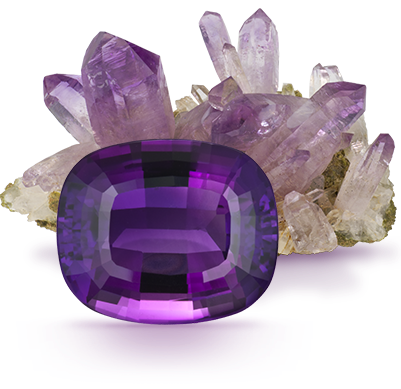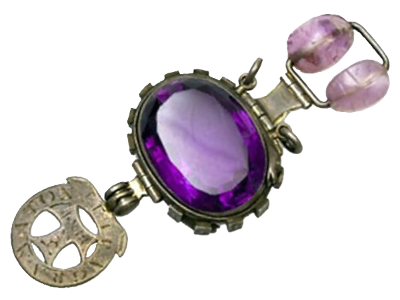Your Bag is Empty
Book an Appointment

Amethyst is February's birthstone, and in many ways, it feels like the perfect match. There’s something wintery about it—not cold, but clear. It’s the colour of twilight, of quiet depth. Deep violet, sometimes with flashes of red or blue, like a gemstone holding its breath.
Ask someone offhand what the birthstone is for February. They might mention its colour. Others might recall that it’s connected to calm or clarity. But amethyst is richer than just a pretty stone with associations. It has a history, a meaning, and a presence that go deeper than most expect.
The February birthstone has been treasured for thousands of years—not just worn, but believed in. The Greeks thought it had the power to prevent intoxication (the word amethystos literally meant “not drunk”). They carved drinking vessels from it or wore them as amulets during feasts.
In Egypt and Mesopotamia, amethyst was often buried with the dead—a travel stone, one might say, to guide the soul calmly through the great unknown.
Later, it became deeply tied to Christian symbolism: bishops wore it, and to this day, many still do. Not to show wealth, but as a sign of purity and moral clarity.
Cultures as different as the Romans, Tibetans, Victorians, and Indigenous North Americans all found something sacred or grounding in the stone. The February birthstone has always offered something beyond the surface: serenity, often, perspective, and balance.
People often associate February birthstone with clarity of thought. And there’s something fitting about that—especially for a February birthstone, when winter quiets the noise and we begin to look inward again.

Symbolically, it's tied to calm, reason, and deepening awareness. People wear it for peace of mind, spiritual focus, or to feel a little steadier in uncertain moments.
And then there’s the colour.
Though most imagine amethyst as a strong purple, no two stones look quite the same. Some are pale violet, soft and smoky. Others lean rich and bold, with flashes of magenta or indigo.
Like the “Siberian” variety, rare February birthstones can show intense royal purple with red-blue flashes. These are harder to find, but unforgettable to look at.
The stone changes depending on where it was formed, how much iron it holds, and how the light hits it. The beauty is in the subtlety. Amethyst doesn’t show off—but it never disappears.
The February birthstone belongs to the quartz family, which makes it both accessible and surprisingly resilient. It ranks a seven on the Mohs hardness scale—tough enough for daily wear, but not immune to scratches or pressure.
It typically forms in crystal clusters, most commonly found inside geodes—quiet grey rocks that, once split, reveal entire galaxies of violet light.
Here’s what makes February birthstone special:
Most importantly? Keep it out of strong, direct sunlight for extended periods, especially in summer. Its colour can slowly fade like a watercolour left in a bright window.
Well cared for, the February birthstone can last lifetimes—and remain just as striking as the day it was first worn.
February birthstone may be affordable on the surface, but it’s never lacked grandeur. Some of the world’s most prominent jewellery collections include it—testament to its beauty.
One of the best-known is the Delhi Sapphire—named misleadingly because it’s actually a 360-carat amethyst. Once looted from India and later set in a dramatic silver ring with embedded curses and a whole legend behind it, the stone now rests in London’s Natural History Museum. And it still draws curious visitors every year.
Several brooches and sceptres in the British Crown Jewels include this February birthstone, once believed to have protective properties against treason.
In the Americas, traditional ceremonial jewellery often includes polished February birthstones, not for rarity but for spiritual value—they are grounding stones that draw the wearer inward.
The February birthstone doesn’t speak in claims. It doesn’t glitter to compete. It simply settles in, clear-eyed and calm, and reminds the wearer of the kind that comes not from silence, but from presence.
That’s the power of amethyst. It doesn’t shout. It’s here to help you listen.
